LinkedIn Sales Navigator is an essential tool for sales professionals looking to enhance their outreach and engagement strategies. With advanced search capabilities, targeted lead generation, and effective messaging options, it enables users to connect with the right prospects more efficiently. Its focus on social selling and unique features for relationship management set it apart from other sales tools, making it a powerful asset for driving meaningful connections.
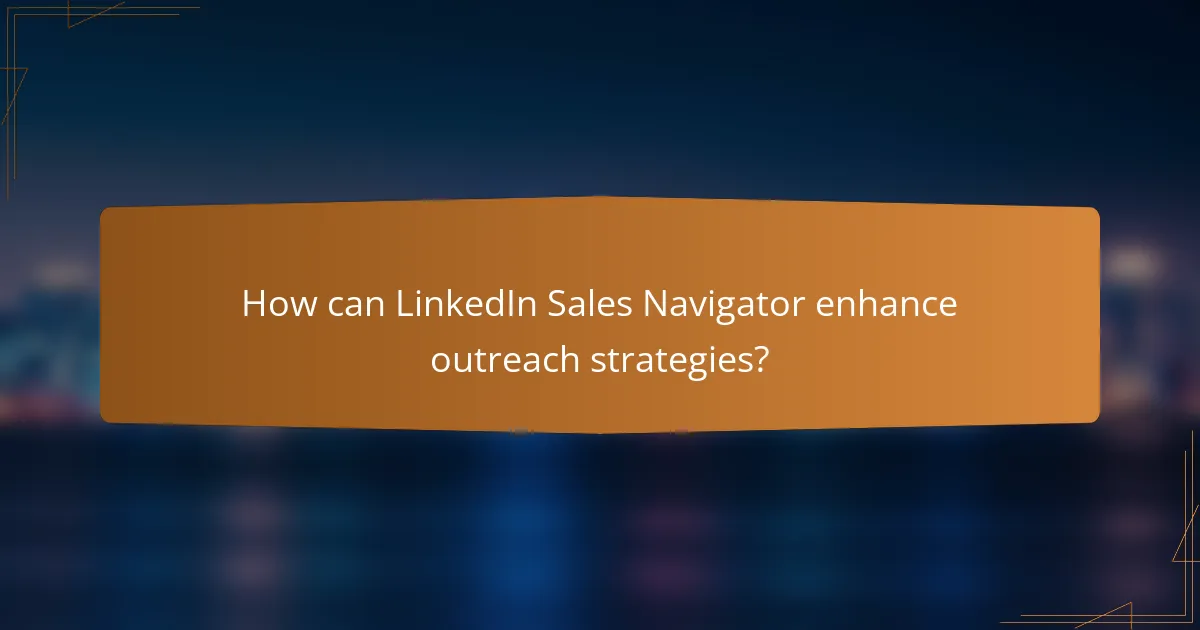
How can LinkedIn Sales Navigator enhance outreach strategies?
LinkedIn Sales Navigator significantly enhances outreach strategies by providing tools for targeted lead generation, advanced search capabilities, and effective messaging options. These features help sales professionals connect with the right prospects and engage them more effectively.
Targeted lead generation
Targeted lead generation through LinkedIn Sales Navigator allows users to identify and connect with potential clients who fit specific criteria. By leveraging filters such as industry, company size, and job title, sales teams can focus their efforts on high-potential leads.
For example, a software company might target decision-makers in the healthcare sector, ensuring their outreach is relevant and personalized. This approach can lead to higher engagement rates and more successful conversions.
Advanced search filters
Advanced search filters in LinkedIn Sales Navigator enable users to refine their searches based on various parameters, including geography, seniority level, and company growth. This granularity helps sales professionals pinpoint the most promising leads quickly.
Utilizing these filters effectively can save time and increase the likelihood of meaningful interactions. For instance, a user might search for marketing directors in the European Union, focusing on companies that have recently expanded, thus maximizing their outreach efficiency.
InMail messaging capabilities
InMail messaging capabilities allow users to send direct messages to prospects outside their immediate network, enhancing outreach opportunities. This feature is particularly useful for initiating conversations with leads who may not respond to traditional email outreach.
To maximize effectiveness, messages should be personalized and concise, clearly stating the value proposition. For example, a sales rep might mention a recent industry trend relevant to the prospect’s business, increasing the chances of a response.
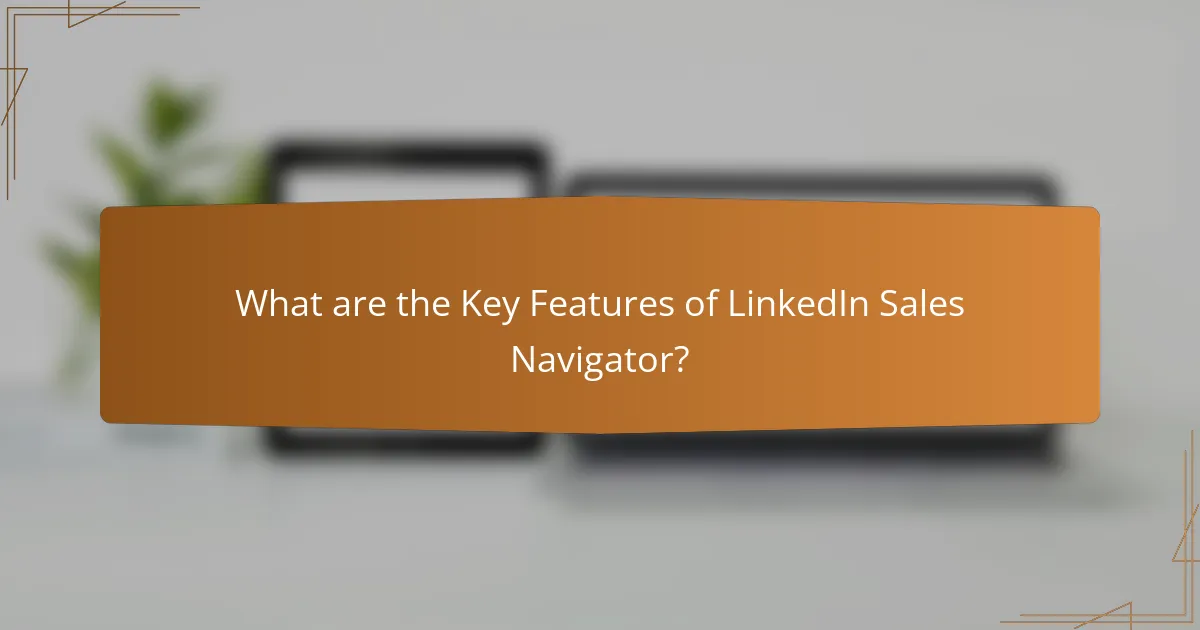
What are the key features of LinkedIn Sales Navigator?
LinkedIn Sales Navigator is a powerful tool designed to enhance sales outreach and engagement through advanced features. It offers tailored recommendations, real-time insights, and seamless CRM integration to help sales professionals connect with potential leads effectively.
Account and lead recommendations
Sales Navigator provides personalized account and lead recommendations based on your preferences and past interactions. This feature uses advanced algorithms to analyze your profile and suggest relevant prospects, helping you focus on high-potential leads.
To maximize this feature, regularly update your preferences and engage with suggested leads. This can lead to improved connection rates and more meaningful conversations.
Real-time insights
Real-time insights in Sales Navigator allow users to stay informed about changes and activities related to their leads and accounts. You can receive notifications about job changes, company news, and shared content, which can serve as conversation starters.
Utilizing these insights effectively can enhance your outreach strategy. For instance, referencing a lead’s recent promotion in a message can create a personal touch that fosters engagement.
CRM integration
Sales Navigator integrates with various Customer Relationship Management (CRM) systems, allowing for streamlined data management. This integration ensures that your lead information and interactions are synchronized, reducing manual entry and errors.
When integrating with your CRM, ensure that you regularly sync data to keep your records up to date. This practice can significantly improve your sales tracking and reporting efficiency.
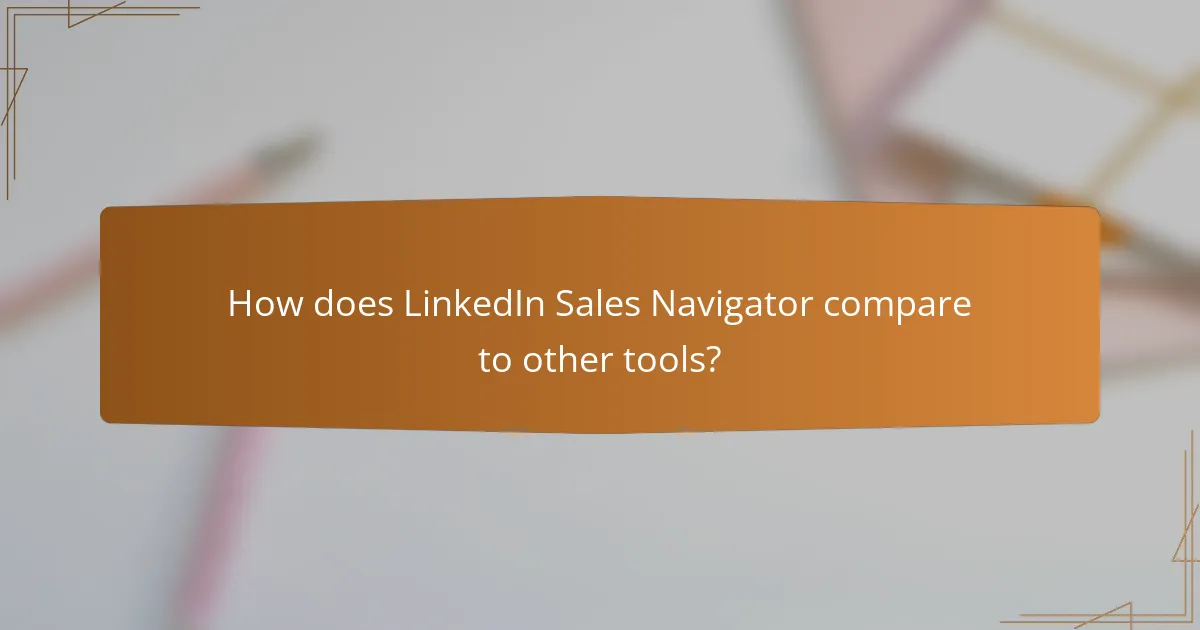
How does LinkedIn Sales Navigator compare to other tools?
LinkedIn Sales Navigator stands out for its focus on social selling and targeted outreach compared to other sales tools. It offers unique features for prospecting and relationship management that can enhance engagement strategies significantly.
Comparison with HubSpot Sales
HubSpot Sales provides a comprehensive CRM platform with marketing automation features, while LinkedIn Sales Navigator specializes in social selling. HubSpot is ideal for inbound marketing strategies, allowing users to track customer interactions and automate follow-ups. In contrast, Sales Navigator excels in identifying and connecting with potential leads through LinkedIn’s vast professional network.
For example, HubSpot’s email tracking and templates can streamline communication, but Sales Navigator’s advanced search filters help users find specific prospects based on criteria like industry or company size. Businesses may choose HubSpot for broader marketing needs, but Sales Navigator is more effective for direct outreach.
Comparison with Salesforce
Salesforce is a powerful CRM tool that offers extensive customization and integration capabilities, whereas LinkedIn Sales Navigator focuses on enhancing sales through social connections. Salesforce is suited for larger organizations that require detailed reporting and analytics, while Sales Navigator is beneficial for sales teams looking to leverage LinkedIn for lead generation.
Salesforce’s robust pipeline management features can be complemented by Sales Navigator’s ability to provide insights into prospects’ activities on LinkedIn. Companies may find that using both tools together maximizes their outreach effectiveness, combining Salesforce’s data management with Sales Navigator’s social engagement.
Comparison with ZoomInfo
ZoomInfo specializes in providing detailed contact information and company insights, while LinkedIn Sales Navigator offers tools for building relationships through social engagement. ZoomInfo’s database allows users to access extensive B2B data, making it easier to identify potential leads based on specific criteria.
However, LinkedIn Sales Navigator’s strength lies in its ability to foster connections and engage with prospects directly on the platform. Businesses might use ZoomInfo for initial lead generation and then switch to Sales Navigator for nurturing those leads through personalized outreach and relationship-building strategies.
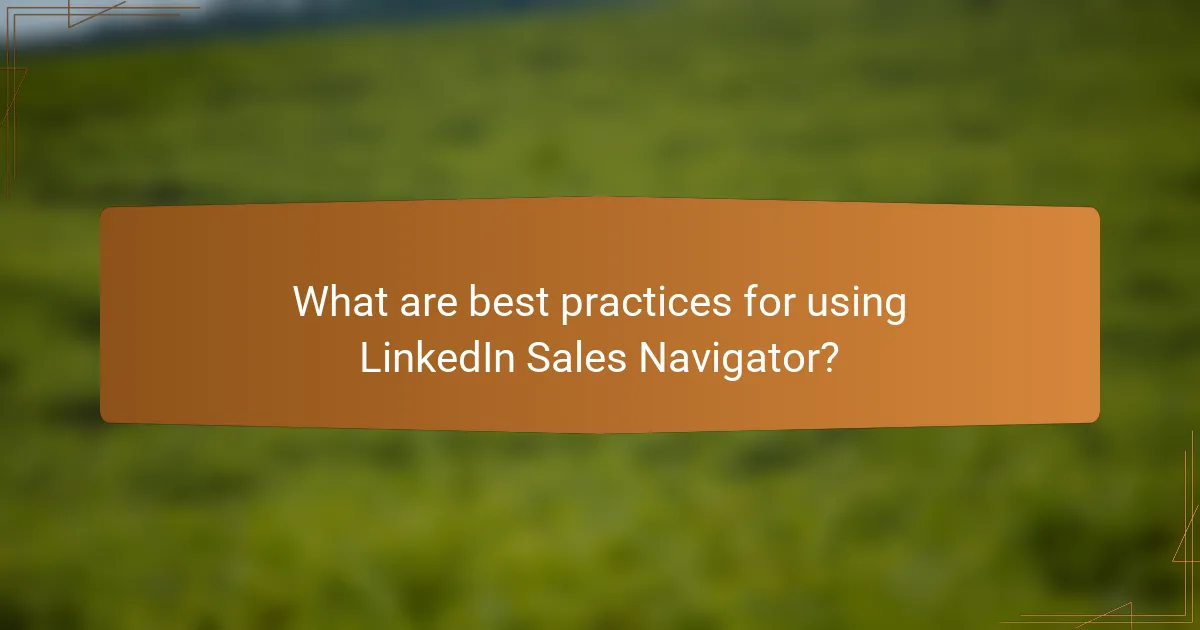
What are best practices for using LinkedIn Sales Navigator?
Best practices for using LinkedIn Sales Navigator involve leveraging its features to enhance your outreach and engagement strategies effectively. By focusing on targeted lists, lead alerts, and meaningful interactions, you can maximize your sales efforts and build valuable connections.
Creating targeted lists
Creating targeted lists is essential for effective outreach on LinkedIn Sales Navigator. Start by defining your ideal customer profile based on industry, company size, and job title. Use the advanced search filters to compile lists that align with your sales goals.
Consider segmenting your lists into categories such as hot leads, warm prospects, and long-term targets. This organization helps prioritize your outreach efforts and tailor your messaging for each group.
Utilizing lead alerts
Utilizing lead alerts allows you to stay updated on your prospects’ activities and changes. Set up alerts for key events like job changes, company news, or engagement with your content. This information can provide timely opportunities for outreach.
Regularly reviewing these alerts can help you identify when to reach out, making your communication more relevant and timely. Aim to engage within a few days of an alert to capitalize on the momentum.
Engaging with prospects
Engaging with prospects effectively is crucial for building relationships. Start by personalizing your connection requests and messages, referencing mutual interests or shared connections to establish rapport. Avoid generic outreach; specificity leads to higher response rates.
Once connected, interact with their content by liking, commenting, or sharing. This not only keeps you on their radar but also demonstrates your genuine interest in their work and insights.
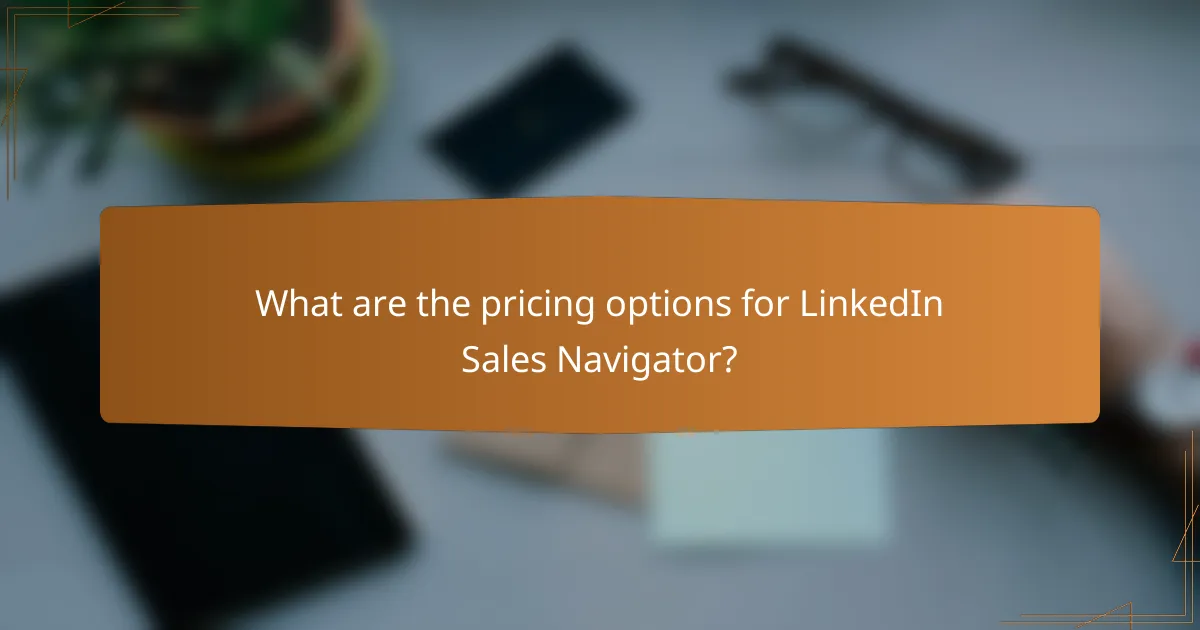
What are the pricing options for LinkedIn Sales Navigator?
LinkedIn Sales Navigator offers several pricing options tailored to different user needs, primarily the Professional and Team plans. Each plan provides unique features designed to enhance outreach and engagement strategies for sales professionals.
Professional plan pricing
The Professional plan is aimed at individual users and typically costs around $99.99 per month when billed annually. This plan includes essential features such as advanced search capabilities, personalized algorithm-driven recommendations, and the ability to send InMail messages to potential leads.
When considering the Professional plan, evaluate your specific outreach needs. If you primarily work independently and require robust tools to connect with prospects, this plan may be suitable. However, keep in mind that the cost can add up if you opt for monthly billing, which is often higher.
Team plan pricing
The Team plan is designed for small to medium-sized sales teams and generally starts at approximately $149.99 per user per month, billed annually. This option includes all Professional plan features, plus additional collaboration tools, team performance tracking, and administrative controls.
Before choosing the Team plan, assess the size of your sales team and the need for shared resources. This plan is beneficial for organizations that require coordinated efforts in lead generation and tracking. It can lead to better overall performance but may represent a higher investment compared to the Professional plan.


